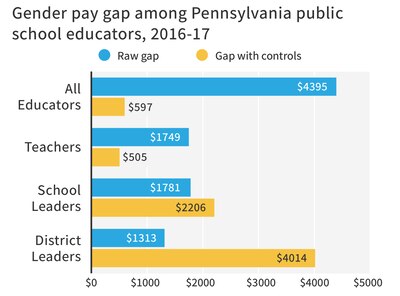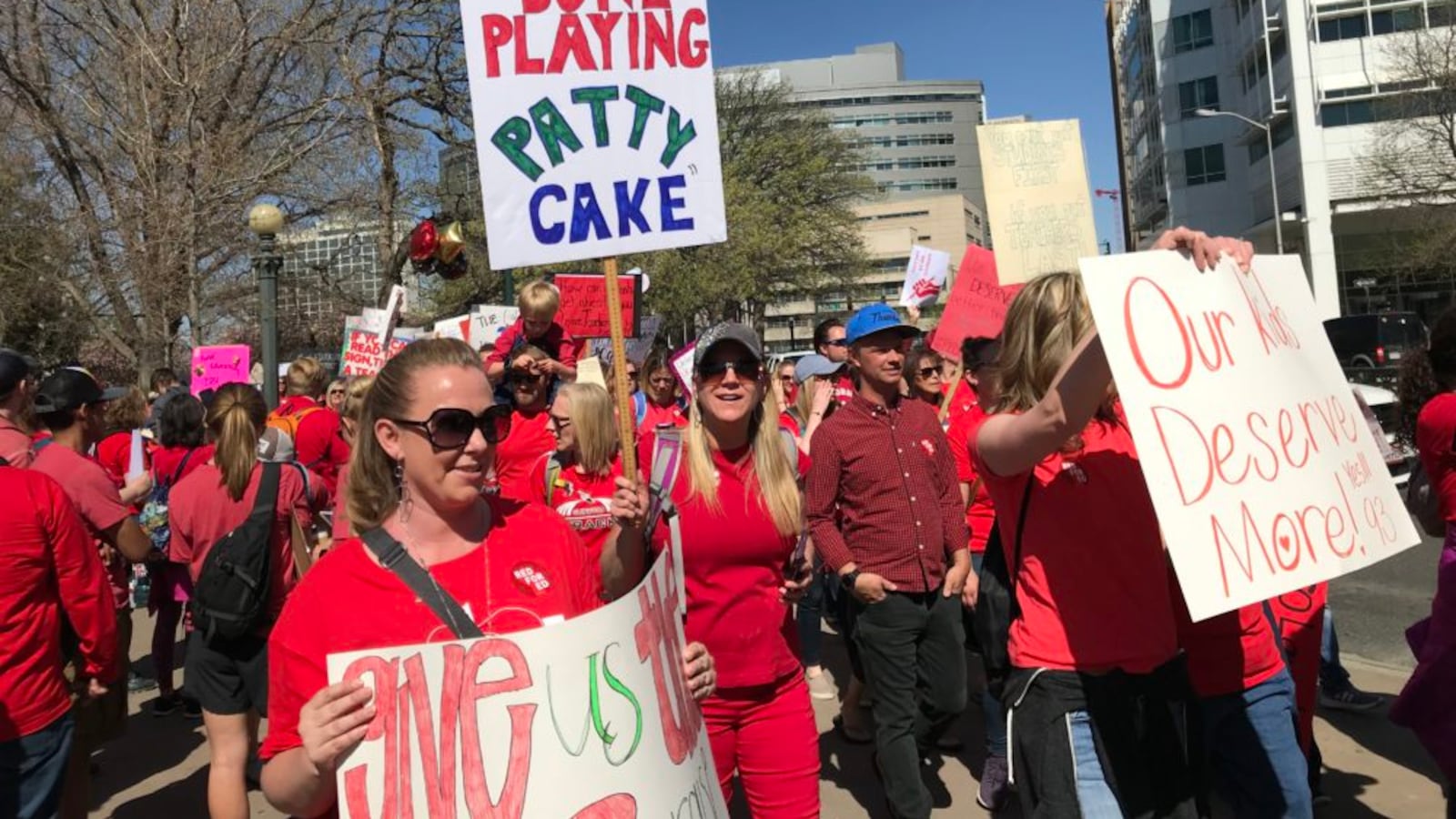Two University of North Carolina graduate students were curious: Were female school superintendents earning less than their male counterparts?
Considering longstanding gender pay gaps across the economy, they expected to find a disparity. And using data from Pennsylvania, they did. But they also turned up something else when they plugged in data about classroom teachers.
“We were like, ‘Oh, we’ll throw these numbers in,” said James Sadler, one of the researchers. “And that’s when our eyes opened wide.”
To their surprise, they found a small but notable gender pay gap for classroom teachers, who are usually paid based on set salary schedules that are designed in part to root out exactly those sorts of disparities.
Virtually no matter how the data is analyzed, female educators earn less than their male counterparts in Pennsylvania, and, according to a separate analysis released this year, Illinois.
In Pennsylvania, disparities are even larger for principals and district leaders. And the gaps actually grow when controlling for factors that might explain the differences, suggesting outright discrimination may be at play.
Together, the two new studies illustrate how even the education field — a female-dominated one where many salaries aren’t open to negotiation — isn’t immune to the gender pay gap, at a time when strikes and walkouts mean extra attention is being paid to teachers’ wages.
“I’m not surprised at all that there’s a pay differential between men and women within the field of education, because men do get promoted more quickly,” said Judith Kafka, an education historian at CUNY’s Baruch College.
What is surprising, Kafka agreed, is the gap researchers found among teachers, considering that salary schedules typically rely on education and experience levels.
Still, in most cases, the pay gap is small relative to educators’ overall salaries — no more than 7 percent and usually less — and the studies can’t definitively explain what’s behind the gap.
The most detailed look at the issue comes from the UNC researchers, who compared the salaries of all public school teachers, school leaders, and district superintendents in Pennsylvania in the 2016-17 year.
In each job category, the raw dollar gap between men and women’s salaries was over a thousand dollars.

There are a few potential explanations for this. Women teachers had about one fewer year of experience, on average, perhaps because they are more likely to take time off in the middle of their careers. Men may be more likely to take on extra duties like sports coaching, which could show up in the numbers even though the data is only supposed to include base salaries. And male teachers more often worked in slightly higher-paying districts.
Accounting for a teacher’s education, years of experience, and district and school type makes the teacher pay gap shrink to about $600. That’s just 1 percent of the average teacher’s salary, though over the course of a career, that difference could mean thousands of dollars lost.
The researchers say they’re not quite sure why it exists.
“That’s really the main question that is still unanswered,” said Sadler. “It’s something that we’re still still trying to figure out.”
One potential explanation, he said, is that teachers who enter a new district mid-career may find room to negotiate where they start on the salary schedule. This may advantage men.
“The salary scale is not necessarily the panacea for dealing with disparities,” said Jay Carter, the other UNC researcher behind the study.
But to Wythe Keever, a spokesperson for the Pennsylvania State Education Association, the state’s largest teachers union, the finding suggests salary schedules are keeping disparities small.
The gender gap “still appears lower than pay gaps based on gender in many other occupations,” he said.
Researchers also found a gender pay gap in Pittsburgh, one of the only districts in the state to have a performance-based pay system for some teachers. But the gap was present for both teachers who were and weren’t part of the system.
While women made up 73 percent of classroom teachers in Pennsylvania, the study showed they accounted for just 44 percent of school principals and 35 percent of superintendents.
That probably explains a part of the pay gap for all educators, a group that includes both classroom teachers and higher-paid administrators. (Nationally, women make up 77 percent of the public school teaching force but 54 percent of principals; just one in five superintendents in the 100 largest school districts have been women over the last decade and a half.)
“As in with other professions, I think that the education field needs to think a lot about how they promote and how they identify people to be promoted,” Kafka said, pointing to a phenomenon known as the “glass escalator,” when men in female-dominated professions move up the ranks more quickly.
Women who lead schools and districts in Pennsylvania face substantially larger pay gaps than teachers do — and controlling for education and years of experience actually makes the disparities bigger, suggesting that women are more qualified than men but still end up making less.
For superintendents, the pay gap amounted to over $4,000 annually. Here, since salaries are usually not based on a set schedule, differences in negotiations and outright discrimination could explain the results, though factors not accounted for by the researchers, such as size of district, may also be at play.
A spokesperson for the Pennsylvania Department of Education laid the blame at the feet of districts. “It is important to note that in Pennsylvania educators’ salaries are determined at the local level,” said Nicole Reigelman, who noted that the state had recently banned state agencies from asking for job applicants’ salary histories.
Some of the Pennsylvania findings are echoed by another study released in March looking at educators’ salaries in Illinois.
Max Marchitello of Bellwether Education Partners, a nonprofit consulting firm, found that women in the education field made about $7,000 less than men. This lumps together different professional jobs, including administrator, classroom teacher, as well as guidance counselor and librarian, among others. But even in similar jobs and at similar experience levels, woman earned less in most cases.
(The exception was elementary school, where men and women were paid comparably despite the fact that women were typically more experienced.) Unlike the UNC study, this analysis does not try to control for multiple factors at once that might explain the disparities.
Even though some of the gap disappears when you control for differences in role, experience, and other factors, the UNC researchers argue that that doesn’t necessarily make the raw disparities less meaningful. If the roles that women fill or their years in the workplace are influenced by society’s expectations of women, it’s worth noting how that translates into smaller salaries.
“We could probably find enough stuff to control for to get rid of a pay gap,” said Carter. “It’s kind of a philosophical question: How hard should you have to work to explain away why real dollars [differ] between what goes into male households and female households?”


